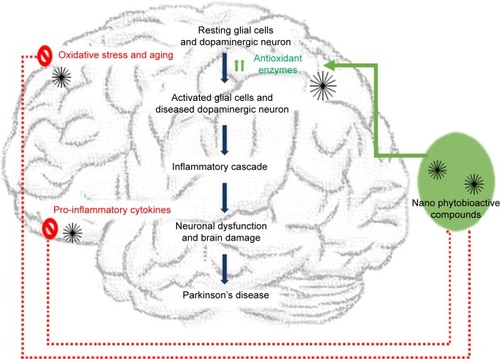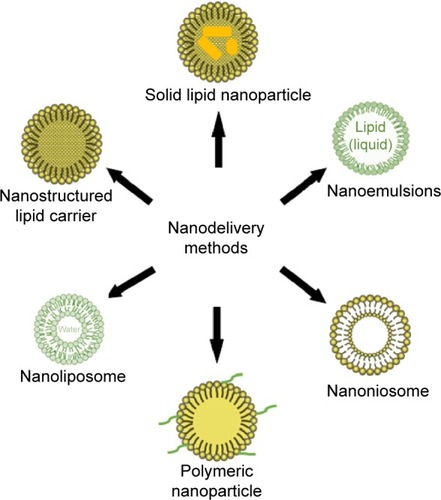Figures & data
Figure 1 Nano phytobioactive compounds mechanism of action against Parkinson’s disease pathway.
Notes: Phytobioactive compounds of its unique nanosize successfully cross the blood–brain barrier thereby inhibit the caspases activity and oxidative stress thereby inhibit further activation of glial cells and diseased dopaminergic neurons; also exhibit enhancement of endogenous antioxidant enzyme levels; inhibit the inflammatory cascade. These actions confirmed that phytobioactive compounds will be a successful therapeutic agent for Parkinson’s diseases.

Table 1 Bioavailability of plant-based nanobioactive compounds and their production methods

